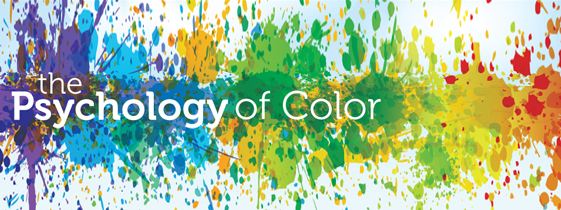Color is everywhere and permeates all aspects of life. From the color of the sky to the color of one’s eyes, clothing, or furniture, it is visible in every image and moment in life. While it is easy to place little true value on color other than how it pleases the eye, it is more important and complicated than most people consciously give it credit for. It can, and often does, affect numerous aspects of one’s life, from one’s mood to how they perceive the world. Additionally, color can also be an effective means of communicating or making a statement. It is even believed by some that colors can impact human wellness as well. A course of study that examines how color affects behavior is called color psychology. By understanding color psychology, people are better able to understand how their color choices affect their lives.
Effect on Mood/Emotion
One important aspect of color is how it impacts one’s moods and emotions. Often, people consciously or unconsciously react to individual colors in a certain way, or they may gravitate towards some colors as a way of expressing emotions or influencing mood. This is done by the clothing that they wear, the color scheme of a room, or their home in general. People often paint their kitchens and nurseries yellow, for example. Yellow is a color that is cheerful and can make person feel inspired. Blue is a color that creates feelings of trust, calm, and patience. On the other hand, red is a color that stimulates feelings of passion and desire. Colors are also attached to less pleasant emotions as well, depending on the shade and context of use. Although yellow is frequently associated with joy, it can also be associated with criticism and cynicism. Ironically, bright yellow rooms often cause babies to cry more frequently and in general can cause fatigue. Blue is commonly associated with feelings of depression and coldness. The color green is one of hope, health and freshness; however, it is also negatively associated with guilt, greed, jealousy, and envy.
- Colors and Emotions
- The Moods of Color
- Light and Color, Including Coloring Vision, Appetite, and Mood
- Color and Mood
- Boost Your Mood with Color
Use in Marketing
As colors are associated with emotions and mood, it is a natural conclusion that they would be used for marketing purposes. Businesses frequently use color to enhance how a consumer sees their product. Color can capture consumer interest and create a desire to own or further explore a product or service. Companies use color in their packaging when creating a brand and label. Colors are carefully chosen for websites and background images. The right colors can attract visitors and increase their chances of making a purchase or reading further; however, the wrong colors can repel consumers and cause them to click away from the site prematurely. In addition, colors are often carefully chosen to capture a target audience or demographic. Hot pink, for example, is a color that expresses youth, high energy, and femininity. As a result, it is a color that is commonly used when marketing to pre-teen and teen girls or young adults. Just as color can catch a person’s interest and desire for a certain product or service, it may also have the opposite effect. Blue, for example, suppresses the appetite and would likely not be an ideal color to use when marketing food. Color also increases brand recognition and familiarity. When used in advertising for countries outside of the U.S., marketers must take culture into consideration, as colors may have different meanings in different parts of the world. White, for example, is seen as pure and virtuous in the United States, but in other countries, such as Japan, it is a color that is associated with death and mourning.
- How Color Affects Marketing (PDF)
- Logo Color Affects Consumer Emotion Toward Brands
- The Use of Color in Marketing
Chromotherapy
There is a theory that color can be used to treat certain illnesses or diseases in the body. It is believed that individual colors have a frequency. This frequency can be used to target various concerns in the body and cause specific responses in circulation, respiration, etc. The use of color to treat ailments is a form of holistic or alternative medicine and is known as chromotherapy. It is also frequently referred to as chromatotherapy or color therapy. The origins of using color in terms of treating health can be traced back to ancient times, predominantly in China and in Egypt. The modern use of chromotherapy can be traced back to the 19th century.
Like emotions, color is thought by some to have individual and unique effects on parts of the body. In many cases, treatment involves concentrating certain-colored lights on chakras, or specific points on the body. The combination of color and chakras is thought to create a positive health response. Red, for example, stimulates red blood cells to aid in anemia, encourages appetite, and is used for circulation problems. The color green can be use as an antibacterial agent and germicide and may lessen heart and digestive problems. It may also combat diseases such as cancer. Toxins in the body may be eliminated by the use of blue in color therapy, and inflammation may also be lessened. Blue is often used by practitioners of chromotherapy to treat headaches and relieve pain from cramping. The lymphatic and digestive systems, as well as asthma cases, may benefit from the use of yellow light.








